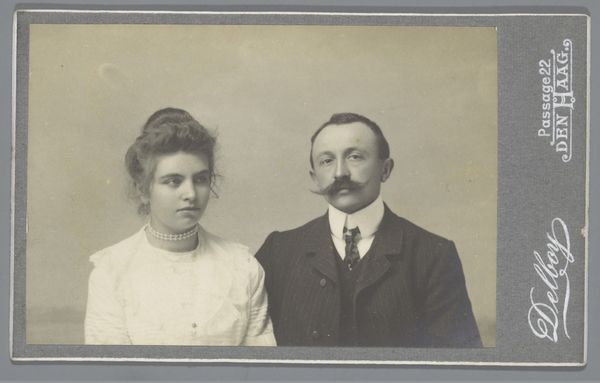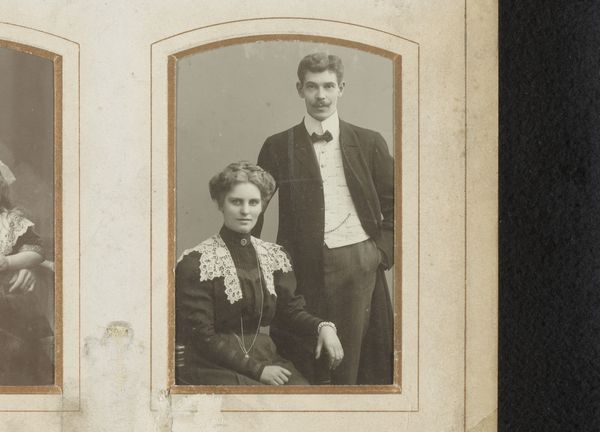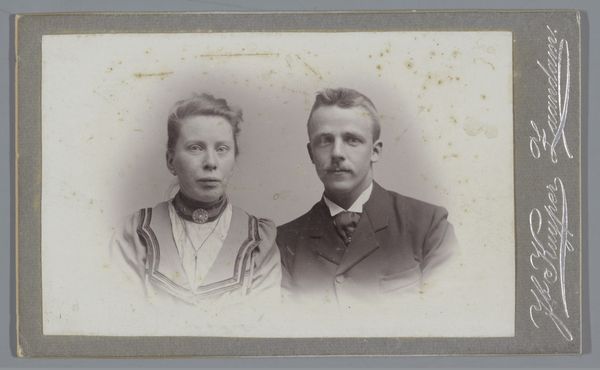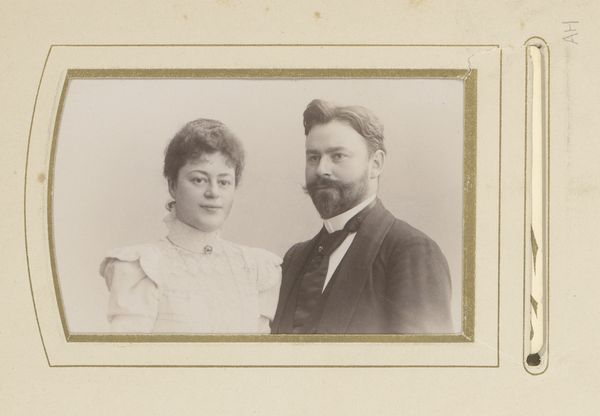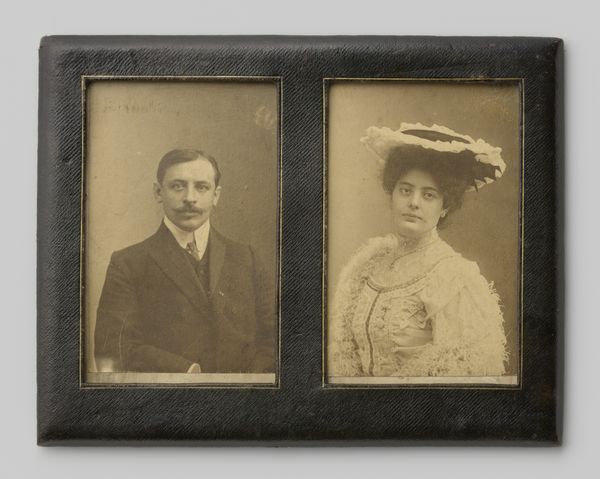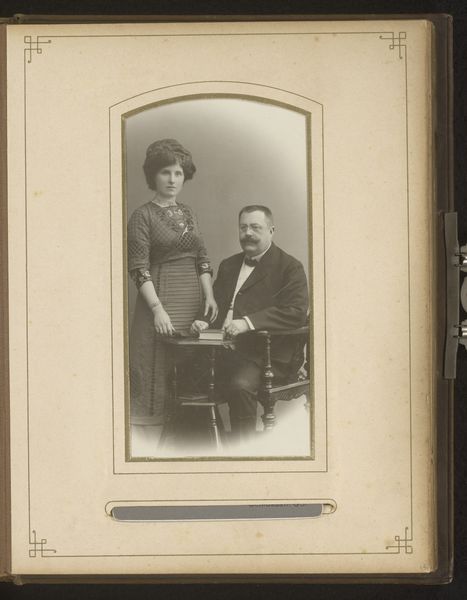
photography, gelatin-silver-print
#
portrait
#
photography
#
historical photography
#
portrait reference
#
gelatin-silver-print
#
19th century
Dimensions: height 116 mm, width 174 mm, depth 20 mm
Copyright: Rijks Museum: Open Domain
Editor: Here we have "Portrait of an Unknown Man and Woman," a gelatin-silver print dating between 1886 and 1906 by Max Büttinghausen. There's something quite haunting about the way they stare directly at the viewer. What sort of narratives do you see unfolding in this piece? Curator: This image pulsates with the coded language of its era. Note how the framing itself—the careful studio portrait— speaks of a rising middle class, eager to participate in the symbolic rituals of permanence and respectability that were once reserved for the aristocracy. But observe also, the 'unknown' aspect... does it perhaps also subtly speak about mortality, as a hidden vanitas symbol? Editor: Vanitas? That’s a bit of a reach, isn’t it? Curator: Is it? Think about what portraiture means: preserving an image against the ravages of time. Consider also the restrained expression and formal dress; a cultural memory deeply ingrained within that 19th-century visual vocabulary. The symbols are intended to show respect, status and a desire for remembrance. Does the somewhat stern expression betray social constraints? Editor: I suppose so... There’s definitely a tension between wanting to present a certain image and the real people underneath. Curator: Exactly. And even that tension becomes a signifier. We read that conflict, that very specific historical desire, like a visual text. It prompts us to think not just about these two individuals, but about an entire epoch striving to define itself through carefully constructed images. Does it make you wonder who might have originally cherished it, before its subjects became "unknown"? Editor: It certainly does make you think about how much meaning an image can hold. It's almost like a time capsule. Curator: Indeed. And in opening it, we uncover layers of cultural DNA, revealing not just what they *wished* to project but who they genuinely *were* within their own historical framework. I've certainly been contemplating social norms and expectations through their representation. Editor: Thanks to you, I see much more than just a stern photo of a couple. It’s like a whole world hidden in plain sight.
Comments
No comments
Be the first to comment and join the conversation on the ultimate creative platform.

